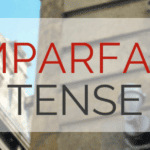
Unlike English, French spelling is actually very regular (although it can look intimidating at first). Spelling ties in closely with French pronunciation and also indicates how a word should be pronounced. Many non-natives poke fun at how many letters in French words seem to never be pronounced, but with practice you’ll be able to see the method behind (what looks like) the madness of French spelling. Below are some guidelines to help you perfect your spelling.
Accent Marks
First, French has several accent marks (also known as diacritics) that indicate how a word should be pronounced, and thus they impact the spelling of words as well. Usually their purpose is to indicate that a letter should be pronounced differently from how it would be without the accent mark.
- The accent aigu (é) goes only on e‘s and indicates that the e should be pronounced “ay”. It’s extensively used in French past tense.
- The accent grave goes on the vowels a (à), e (è), and u (ù). The à and ù do not change the pronunciation of their respective letters, but the è changes the pronunciation to “eh” as in “beg”.
- The accent circonflexe can go over any vowel (â, ê, î, ô, and û), but it usually doesn’t change the vowel’s pronunciation. (Fun fact: the circumflex is a visual marker as the word evolved from its Latin spelling indicating that an s or doubled letter once followed the vowel.)
- The tréma (ë, ï) goes over the second of two consecutive vowels to indicate that each vowel sound needs to be pronounced separately. Noël (Christmas) is probably the most well-known example.
- The cedilla (ç) occurs only with the letter c and transforms a “hard” c into a soft “s” sound.
More information on French accent marks is in our French alphabet post.
Common French Syllables
Some longer French words can look intimidating, often containing multiple vowels, but many will consist of shorter, established syllables that are (almost) always pronounced the same way. Here are some syllables that you should get used to seeing:
- eau (pronounced “oh”)
- eu (no direct comparison in English; pronounced something like “u” in “um” if the “u” was cut off short and spoken mostly inside your mouth)
- ai (pronounced “ay”)
- eille (pronounced “eye-uh”)
- aille (pronounced “ay-uh”)
- gn (pronounced “nyuh”)
- qu at the beginning of a word and q at the end of the word (both pronounced with a hard “k”)
Spelling Changes
Instead of having endless spelling “exceptions” like English does, French spelling usually conforms to set rules even when it needs to change a word’s spelling to make it match the desired pronunciation.
For example, to soften a “c” sound that comes before before the a, o, and u vowels, c becomes ç. It’s why ça va needs the c to have a cedilla, but c’est does not. The cedilla transforms the “hard” c sound (pronounced like the “k” in “dark”) to a “soft” c sound (pronounced like the “c” in “center”).
Without using a c-cedilla, the hypothetical word garcon would be pronounced “gahr-kon”. With the c-cedilla, garçon has the desired “gahr-sohn” pronunciation.
A similar thing happens with g‘s – if the g is placed in front of an a, o, u or a consonant, French pronunciation rules state it should be a hard “g” (like in “gulf”). However, it can be transformed into a soft g (like the “g” sound in “beige”) by adding an e after the g.
Without adding an extra e, the hypothetical nous mangons would be pronounced “mahn-gon”. With the additional e added, nous mangeons has the desired “mahn-zhohn” pronunciation.
Plural spelling
The plural form of most French words is usually formed by adding -s or –es to the end of the word, just like in English. However, there are some exceptions:
- Words which end in –al or –au: these words usually take –aux as their plural form.
- Words which end in –eau: these words generally take –eaux as their plural form.



